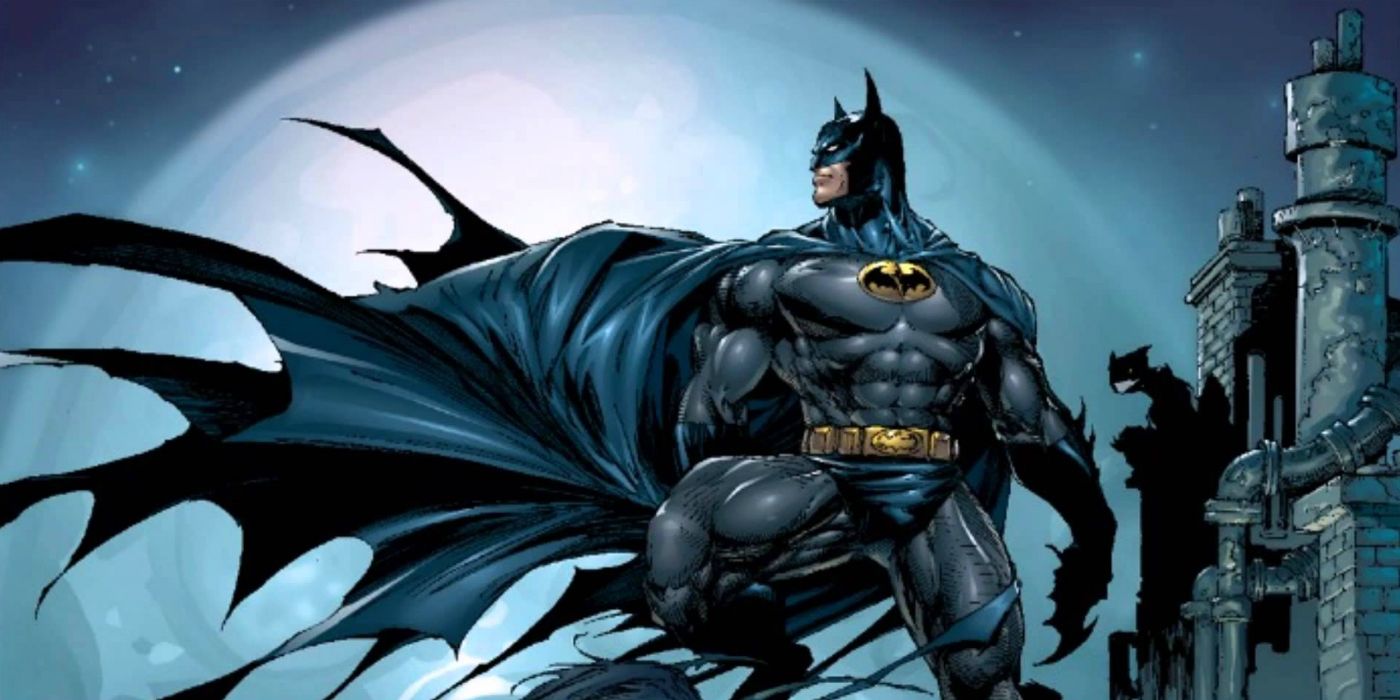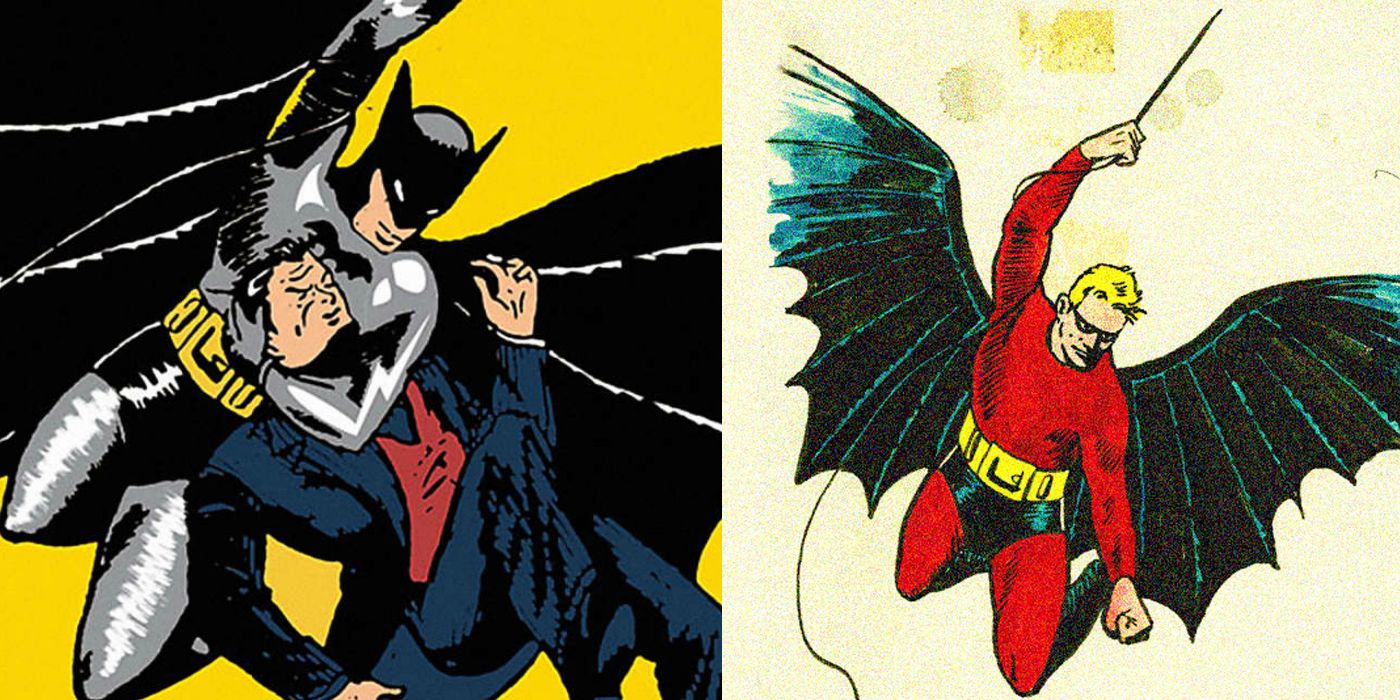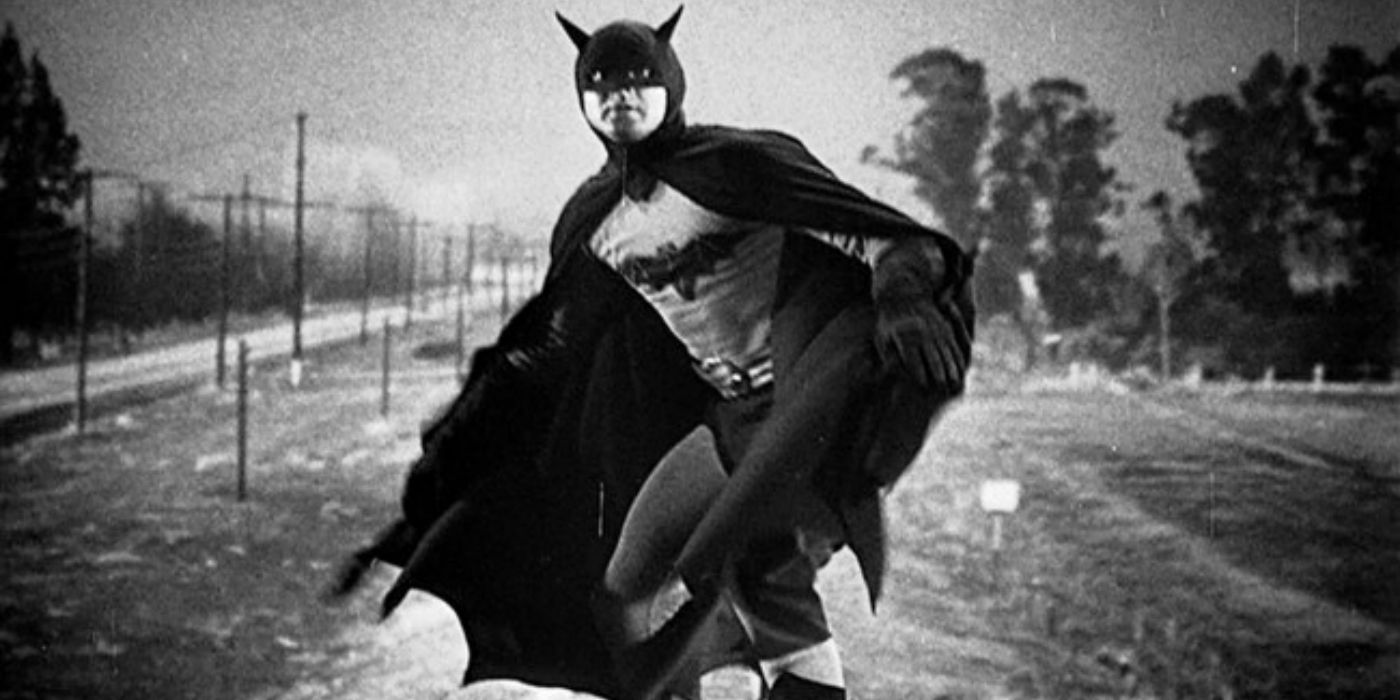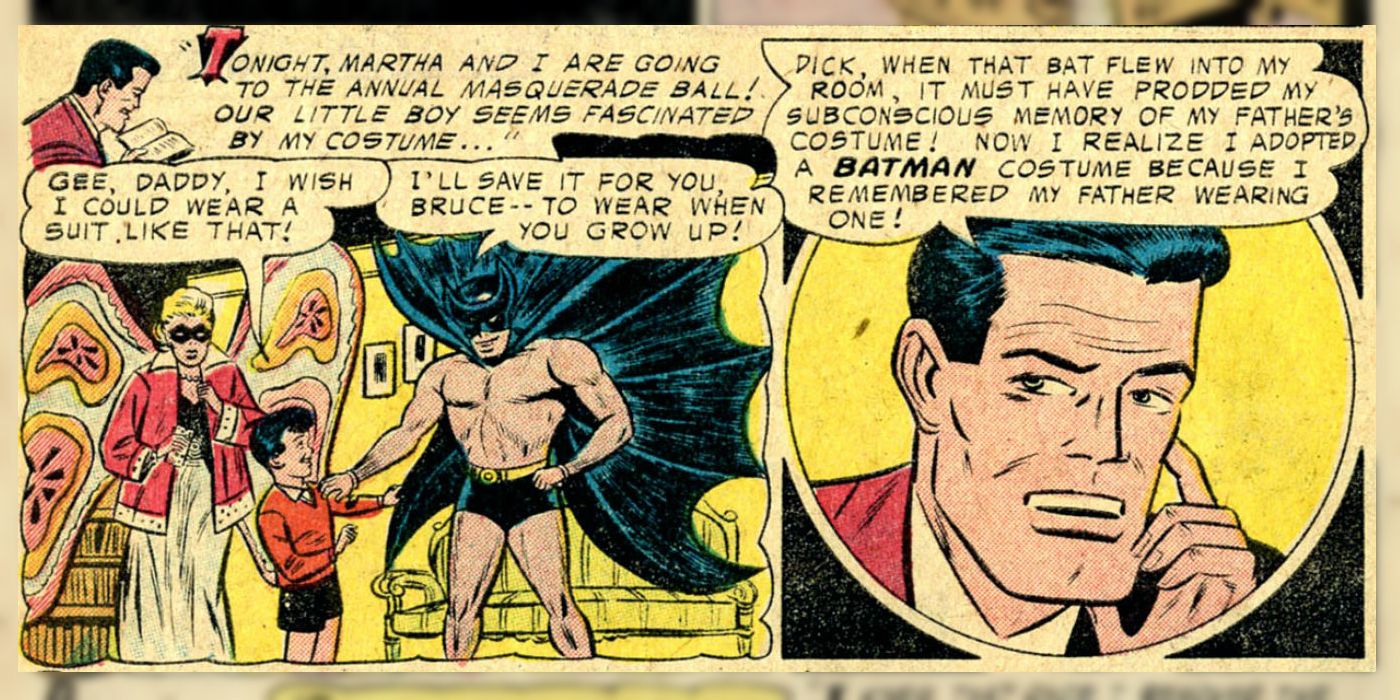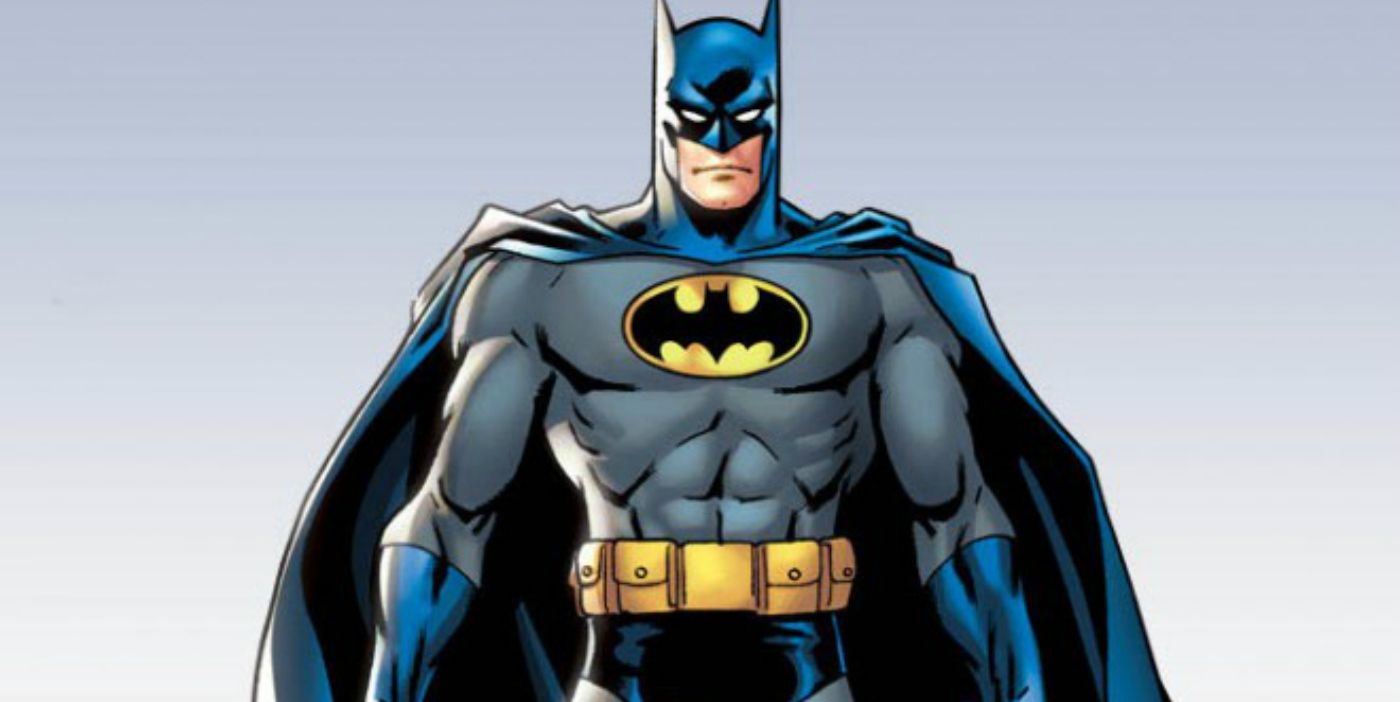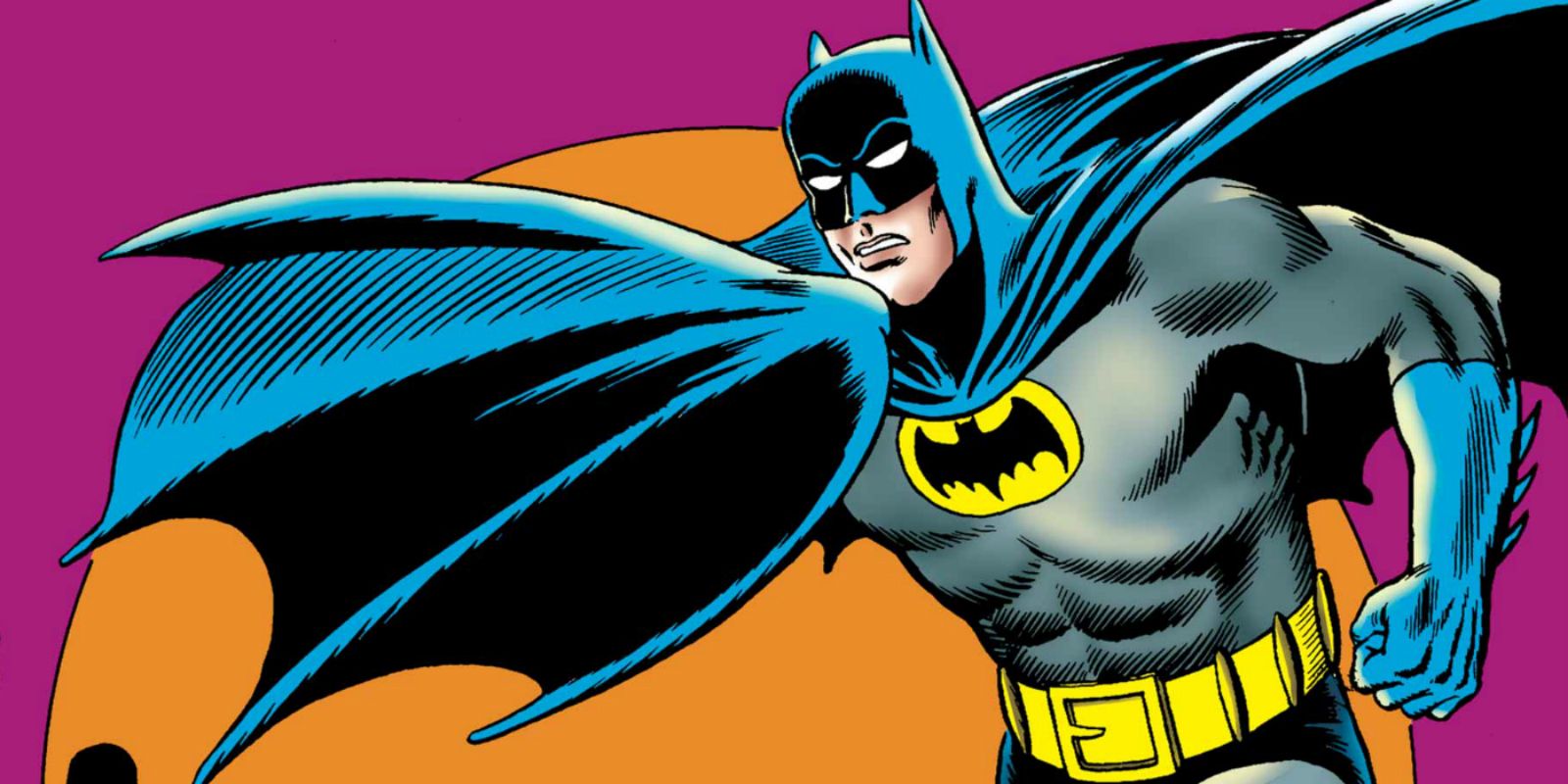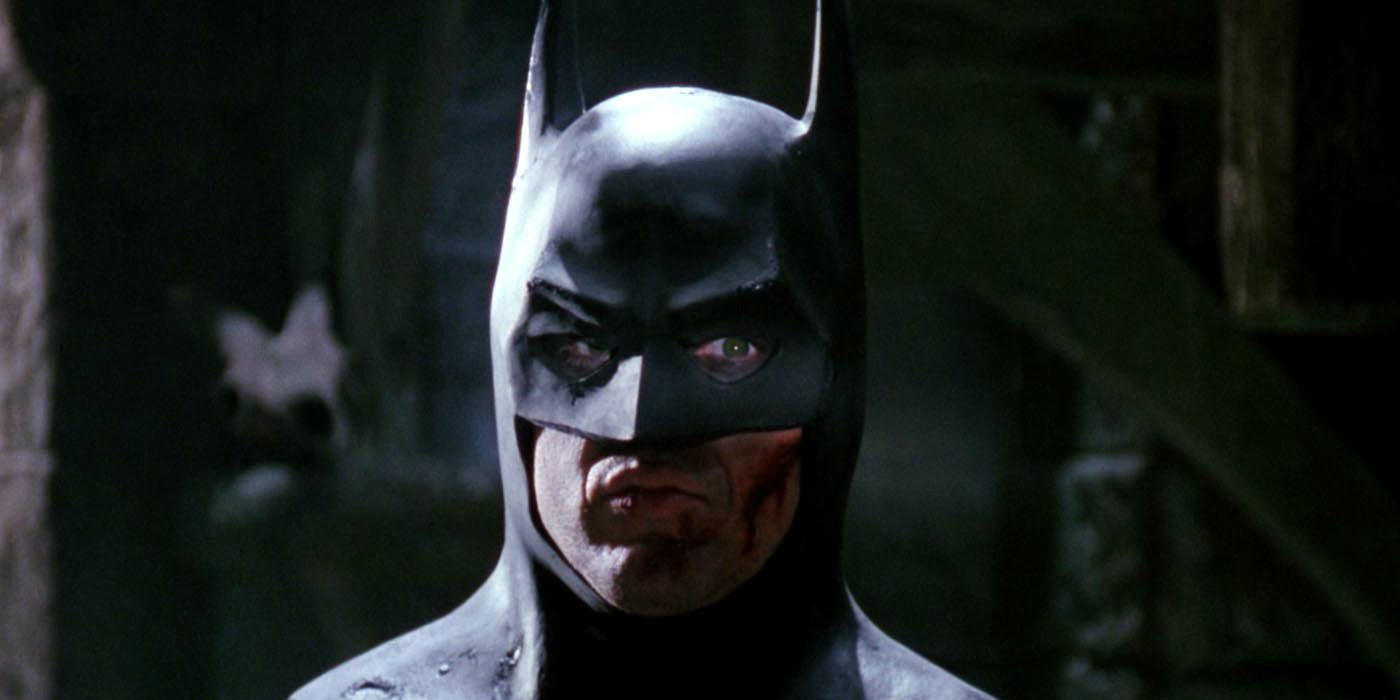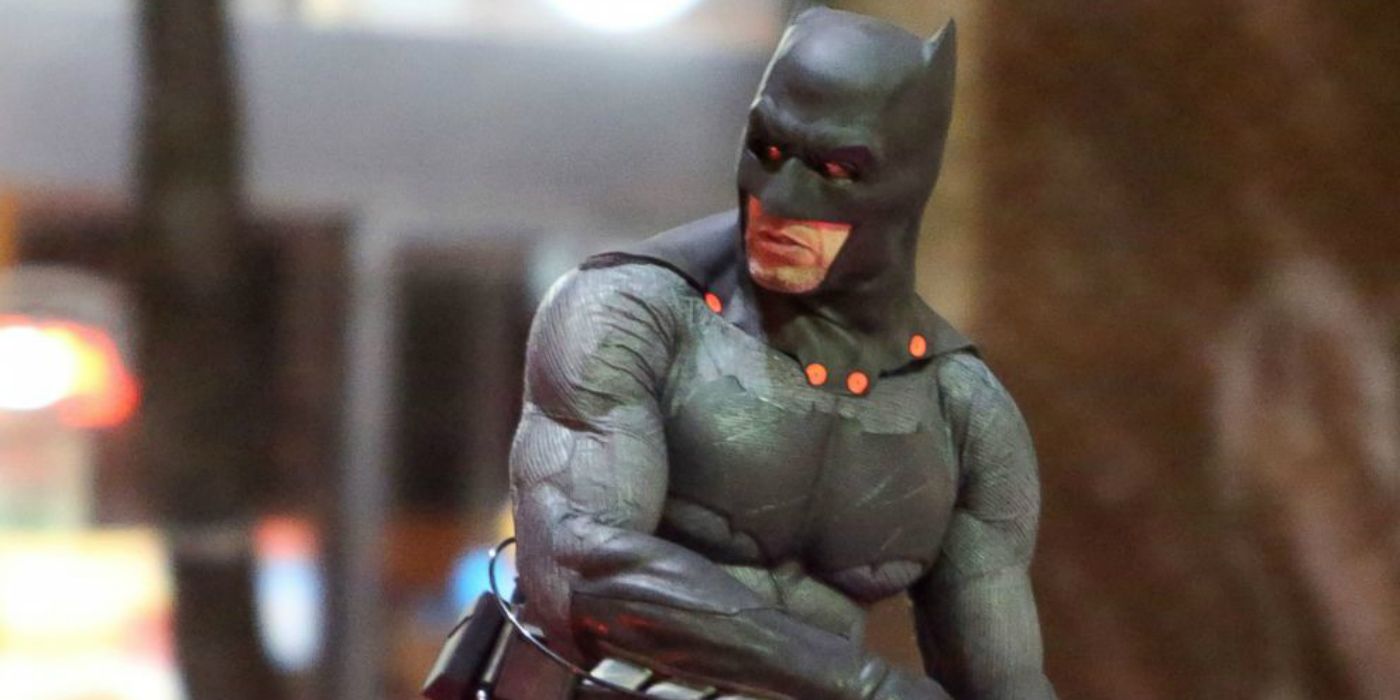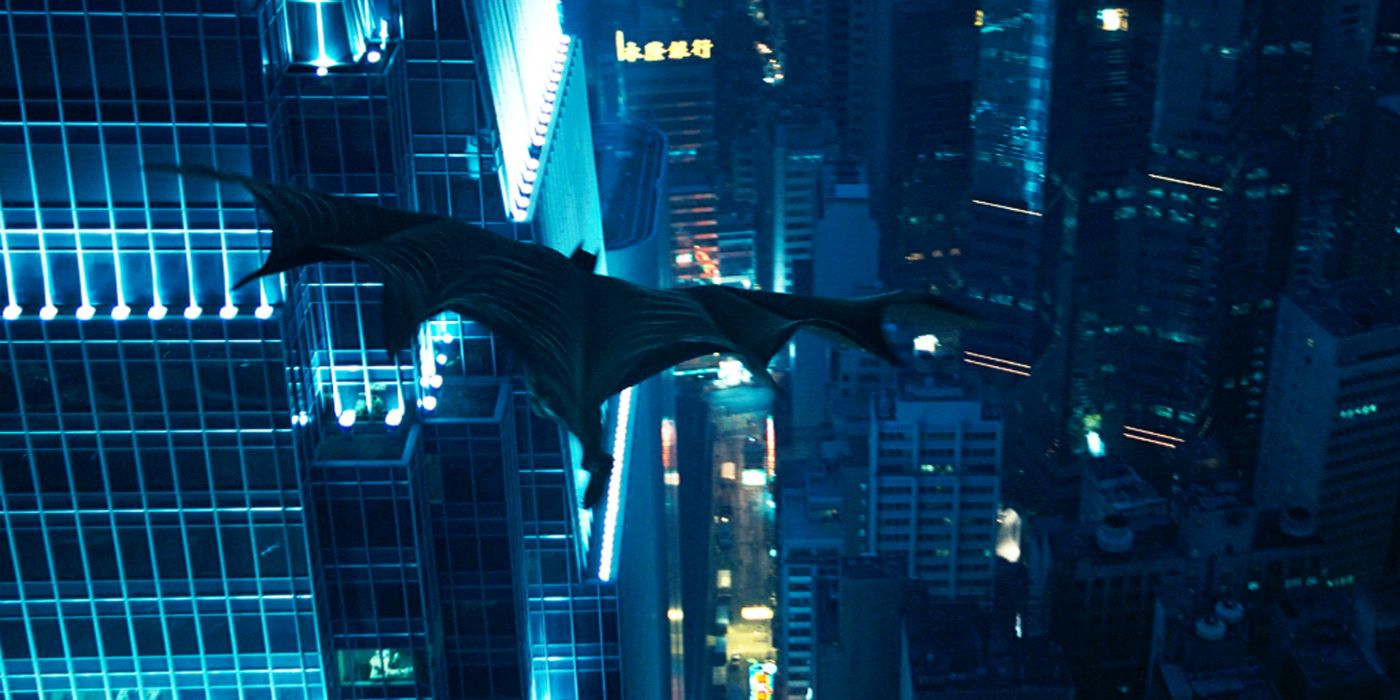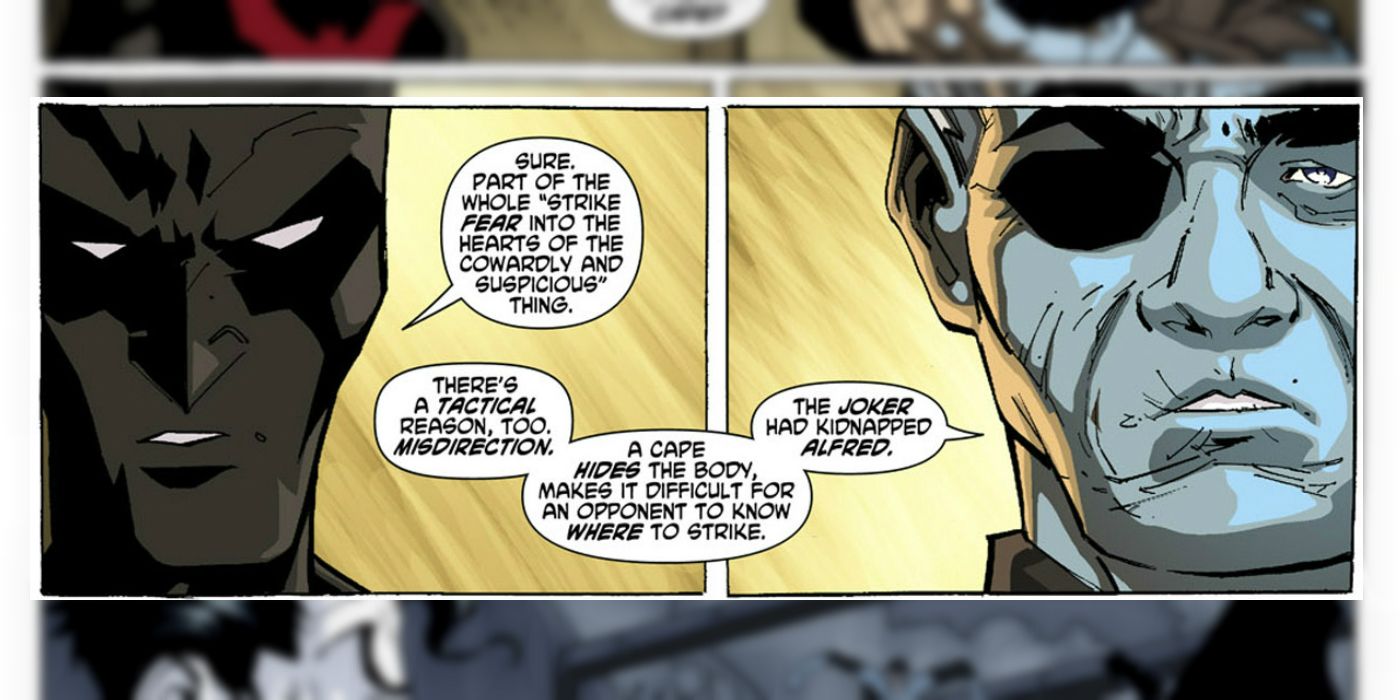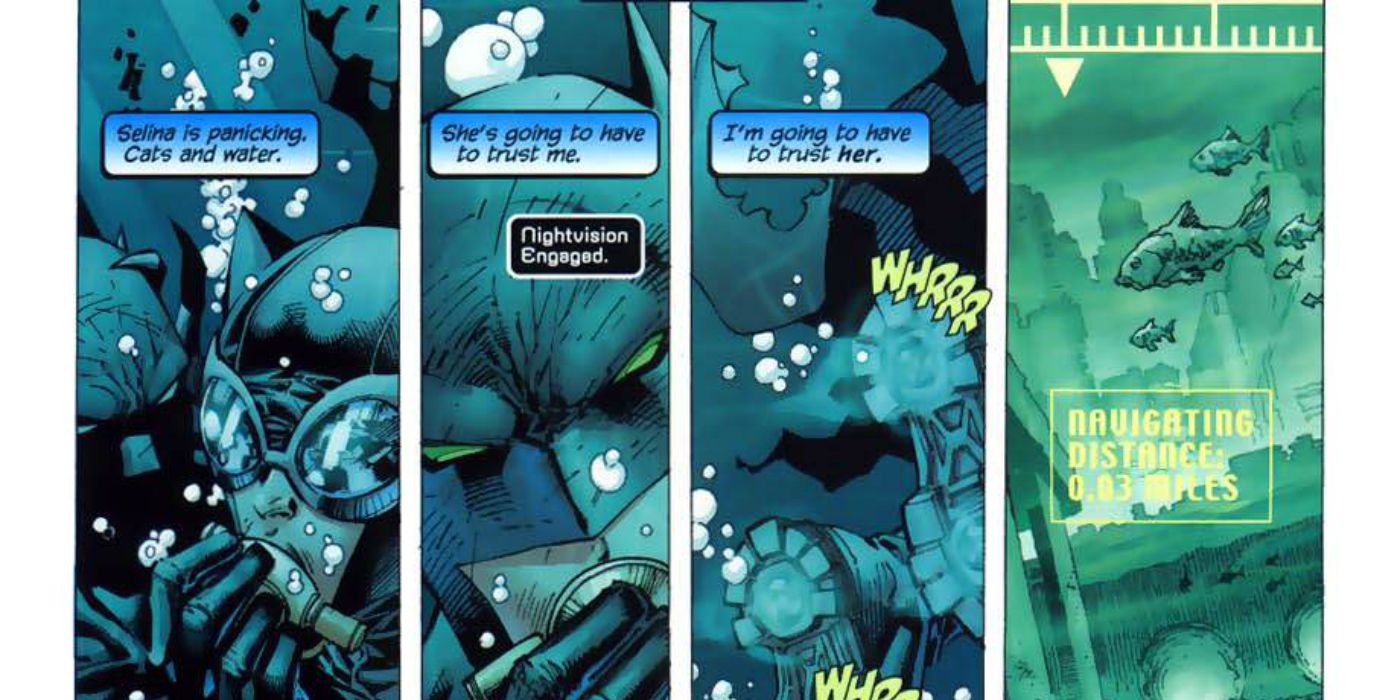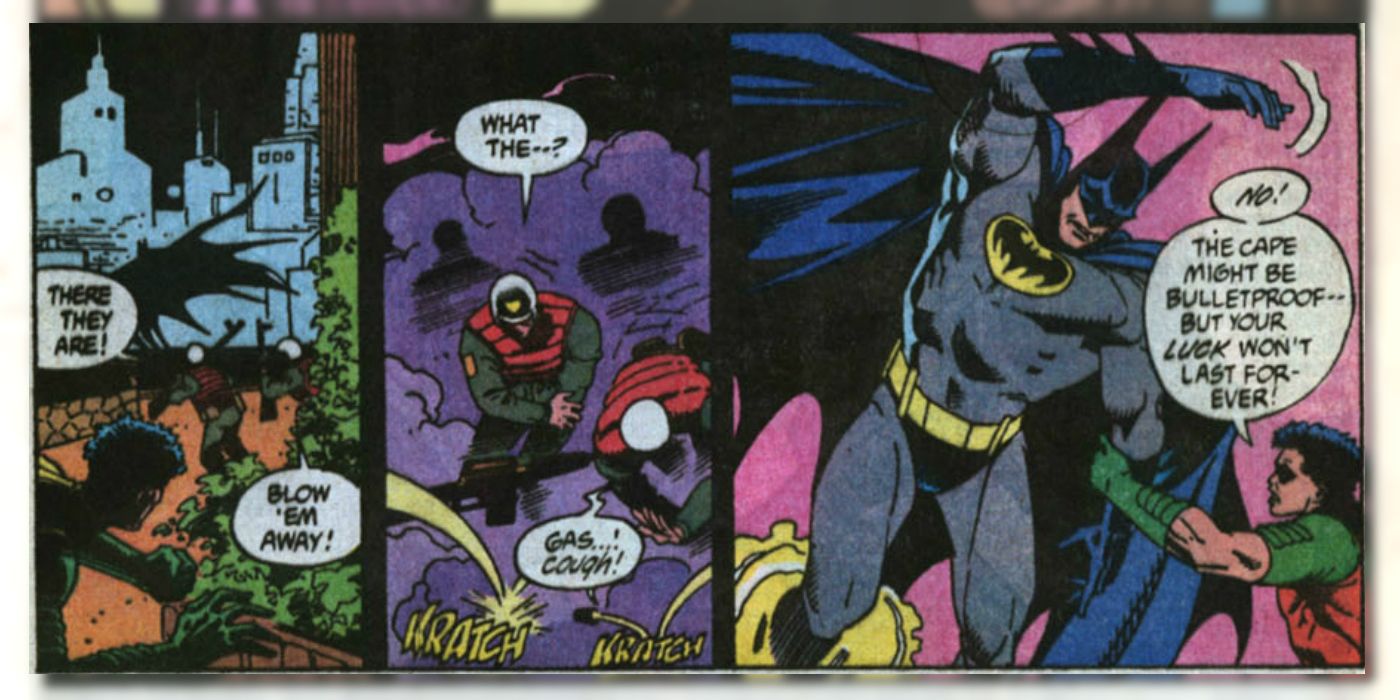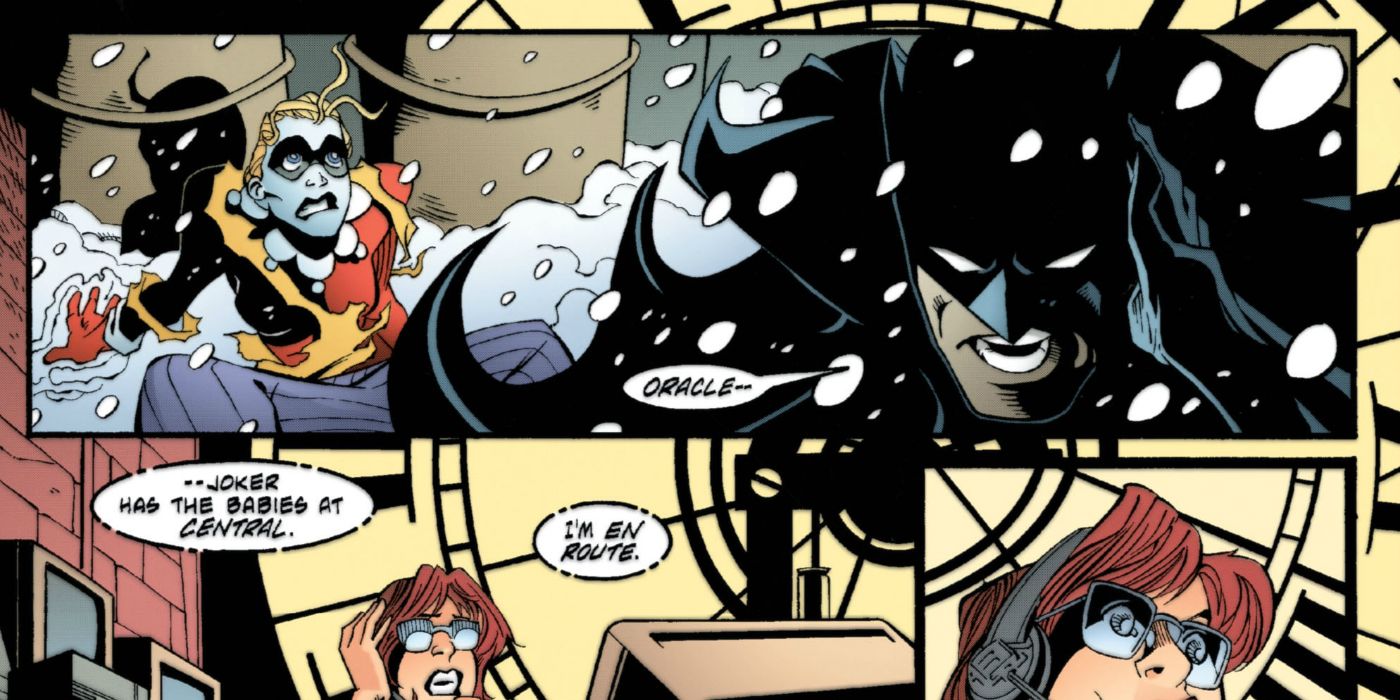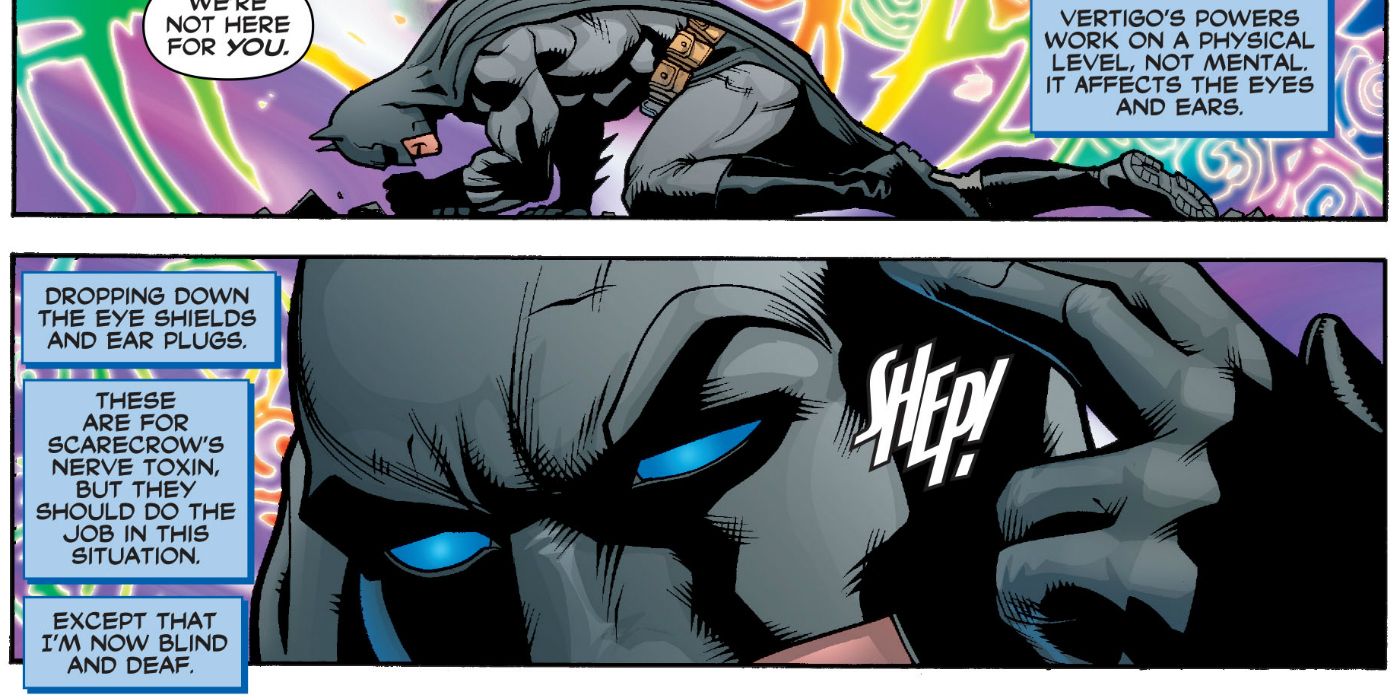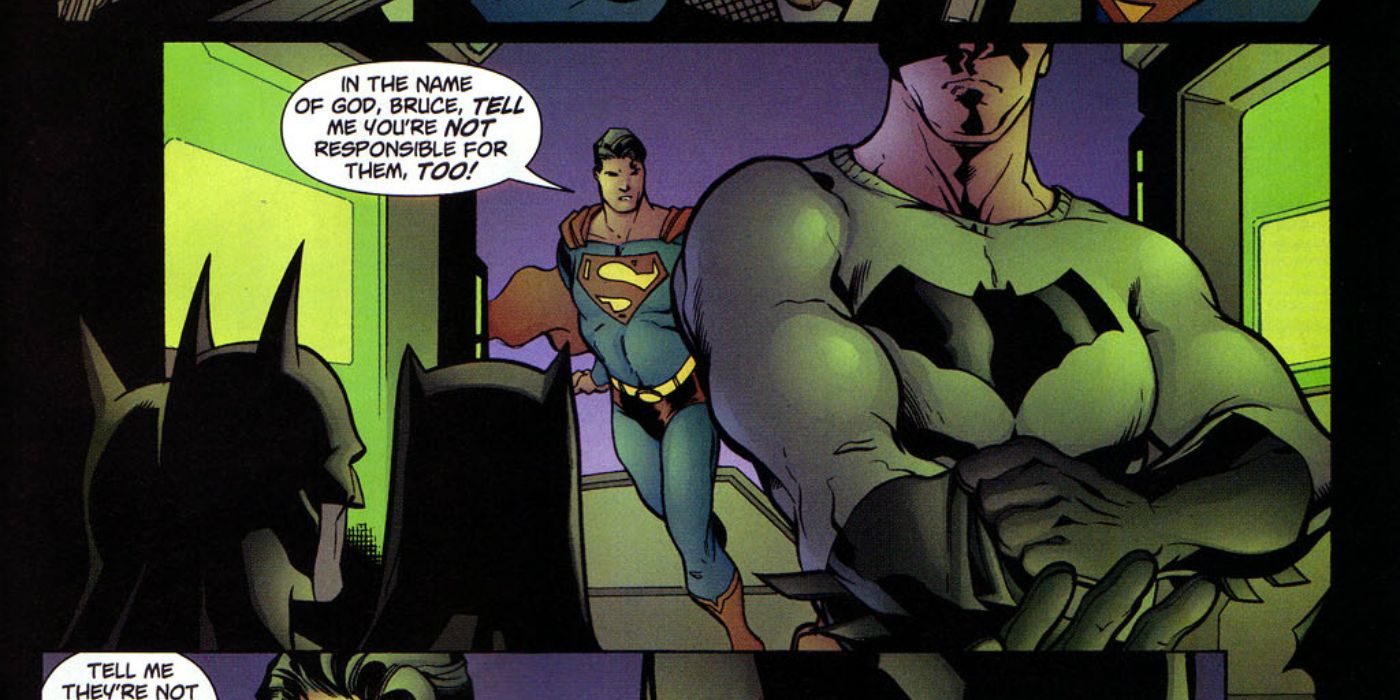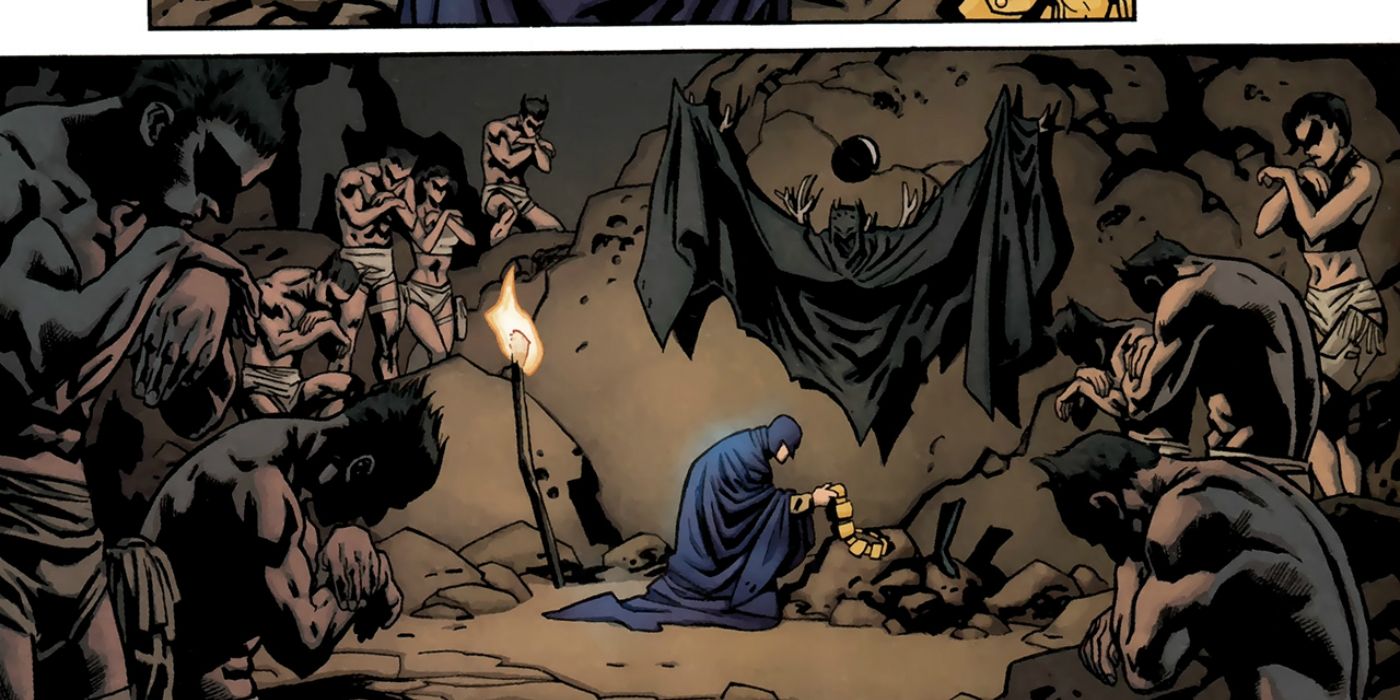A lot of superheroes like Superman and Thor wear capes, but not many of them are as well-known as Batman's. With the scalloped edges that make them look like wings and the cowl with its pointy ears, Batman's silhouette wouldn't be complete without them.
RELATED: 16 Things You NEVER Knew About the Batcave
When it comes to Batman's arsenal, his utility belt and Batmobile usually get a lot of attention, but the cape and cowl are what really make Batman iconic. Without them, he'd look like any other generic superhero. Much like everything in his collection, the cape and cowl have undergone a lot of changes and modifications, both within the comic and behind the scenes. Unless you're a hardcore Batman fan, here are 16 things you never knew about Batman's cape and cowl.
16 CAPE VS. WINGS
When Bob Kane drew his first concept of Batman, it was very different from what we think of Batman today. In his original sketch, Batman wore red tights with no gloves or cowl on his head. He just wore a domino mask that didn't hide his blonde (yes, blonde) hair. The most surprising part about the costume was the cape or the lack of one. Instead of a cape, Kane designed Batman with two wings on his back that always stayed up. The design was inspired by Leonardo Da Vinci's drawings of bat-winged gliders.
It was his writing partner Bill Finger who suggested a complete re-design, which ended up with a lot of the iconic elements that would be a part of the enduring Batman costume. One of the biggest changes was replacing the wings with a cape that had scalloped ends. Instead of wings, Bill Finger suggested making the cape fan out like the wings Kane wanted. If you'll notice in the early issues, Batman's cape does indeed fan up into the shape of wings far more often than today.
15 EARS VS. HORNS
The cowl also got a redesign suggestion from Finger, who suggested a cowl that covered Batman's head instead of just a mask over the eyes. He rightly pointed out that a cowl would look much scarier and more interesting. Finger actually took a dictionary, found a picture of a bat, and pointed out the ears for Kane to copy onto the cowl. Kane did follow his advice and put ears onto the cowl, but (again) they weren't the ears like we see them today. Kane's "ears" came up as sharp points from the sides of the head and at angles instead of straight up and down. In fact, the ears looked more like horns.
Kane's design of the ears ended up causing some major problems for the live-action "Batman" serials that came out in 1943. Given how hard it was to translate Kane's ears into something real, plus the limited budget, the live-action serials just made the ears into straight-up horns. That didn't get fixed until decades later.
14 THE FIRST BATMAN
Most Batman fans know how Bruce Wayne became a bat. He was sitting by a window, trying to think of what he was going to become when a bat flew in, giving him the idea. However, there was another reason he chose a bat and how he came up with the design. In 1956's "Detective Comics" #235 (Bill Finger, Sheldon Moldoff), it was first revealed that the cape and cowl were inspired by his father's bat costume. That's right, his father was the first Batman.
In the story, Batman explained to Robin that Thomas Wayne wore a bat-costume to a costume ball with a theme of "winged creatures." When mobsters tried to kidnap him, Thomas Wayne fought them while wearing it, making him a crime-fighter. This origin was later retold in 1980's miniseries "The Untold Legend of the Batman" (Len Wein, John Byrne), where Bruce Wayne subconsciously drew off his father's design for his own cape and cowl. It's not an accident that his father's costume strongly resembled Kane's original design.
13 BLACK AND BLUE
Batman isn't called the Dark Knight for nothing. Batman's costume is traditionally black and gray or dark blue, depending on the writer. Artwork from the 1970s through the 1990s make his bodysuit gray while his cape and cowl are dark blue. The movies have almost completely made his costume shades of black and gray. If he's supposed to be a fearsome figure of the shadows, why are his cape and cowl sometimes shown as blue?
This color choice had more to do with comic book coloring techniques of the time than anything else. In the 1940s, printing technology needed black ink to be used sparingly in comics, mainly just for shadows. Batman's cape and cowl were originally drawn as black and gray, but were given blue accents to limit the amount of black, and also give them more of a three-dimensional look. Modern coloring technology allows for more gray and blacks, back to the way Batman was intended in the beginning.
12 THE 1960s
The '60s TV version gets a lot of flak for its goofy and camp humor, and its wacky design, and the costume was no exception. You may have seen the cowl with its wide eyeholes, tiny ears and drawn-on eyebrows, and thought it was a ridiculous version of the classic suit, but it actually wasn't.
Jan Kemp was the costume designer, and he actually worked hard to be really faithful to the comics at the time, certainly more than any other costume designer before. In the old serials of the 1940s, Batman's cowls were baggy and the ears were just spikes on the top of his head. In the 1960s, Carmine Infantino was drawing Batman, and Kemp modeled the TV version off that version. The short ears and pointed nose were all features Batman had at the time. Even the drawn eyebrows were something Infantino was doing in the 1960s in the comics.
11 THE EYES
In the comics, Batman's eyes are part of his mystery, but there have been a lot of problems translating that to the big screen. In the early "Batman" serials and the TV show of the 1960s, Batman's mask had holes where the actor's eyes showed through. One thing that 1989's "Batman" started was a tradition that continued all the way to "Batman v Superman": eye makeup. In the first movie, Michael Keaton wore a cowl with the eyeholes some distance from his actual eyes and black makeup around them to blend in the skin.
That may seem like a logical idea, except that in the comics, Batman's cowl is usually shown with white lenses over the eyes. That makes sense, since showing the color and shape of his eyes could reveal his identity. The movies have almost always shown his eyes, probably to make it easier for the actor to see and perform, but isn't as faithful to the comics.
10 THE NECK
Another tradition that started in 1989's "Batman" that wasn't changed until recently was Batman turning his head. It's not a problem in the comics, but when Michael Keaton first put on his Batsuit and tried to turn his head, the neck tore open. From then on, he had to keep his neck perfectly still and turn his body instead.
The in-universe explanation for why Batman didn't turn his head was that the armor in his suit kept his neck stiff. In reality, it was because the rubber cowl was easier to make by attaching it directly to the shoulders instead of as a separate piece. In 2008's "The Dark Knight," Bruce Wayne finally decided to take out some of the armor to give himself more freedom of movement. That gave Batman the chance to turn his head for the first time in almost 20 years. It just looks more natural.
9 THE FLYING CAPE
What kind of bat would our hero be if he couldn't fly? Turning his cape into wings that allow Batman to soar is a relatively recent creation. You've probably seen him do it in the movies, but you might not have known that's actually the first time he used the trick. The ability to turn his cape into a hang glider was first suggested in 1992's "Batman Returns." In the movie, Batman triggers a frame that snapped into place to let him fly to the ground.
In 2005's "Batman Begins," the cape was made of memory fibers that would form the shape of wings whenever Batman exposed them to electricity. That turned the cape into a sort of wing-suit, which he kept throughout Christopher Nolan's trilogy. The comics followed in 2009 when "Batman and Robin" #1 (Grant Morrison, Frank Quitely) introduced the "para-cape" for the Dynamic Duo to glide over Gotham.
8 DISTRACTION
There are other superheroes who wear capes, but few have made the cape a part of their persona like Batman. Batman's cape is almost a part of the man himself, twirling around him and draping his powerful form in black cloth. Batman sweeping across a room, bullets flying around him as he seems to be all cape and cowl, and Batman standing in the shadows (nothing but a long cape and dark cowl) have become an iconic image in comics. It turned out that was entirely the plan.
In 2010's "Batman Beyond" #4 (Adam Beechen, Brian Benjamin), the new Batman Terry McGinnis went to see an older version of Dick Grayson. Grayson explained that Batman's flowing cape was intended to draw attention and hide his body when moving, making it hard to know where to shoot or strike. The idea is that enemies will shoot or punch at the cape and avoid Batman's body. Even Batman's cape is carefully chosen for defense.
7 DEFENSE MECHANISMS
Batman's secret identity as Bruce Wayne is of utmost importance to him. Not only is Wayne's secrecy and wealth central to his mission, but whenever his identity is compromised, his loved ones like Alfred and Dick Grayson are first on the list of people who his enemies target. That's one of the reasons Batman's cowl covers almost his entire head, keeping most of his face and even his hair a secret. A few times, people have tried to take his mask to find out his secret identity, and they've all regretted it.
Batman's cowl has defense mechanisms to keep people from trying to take it off. In 2002's "Batman: Hush" (Jeph Loeb, Jim Lee), Batman was knocked out and some thugs decided to try to take off his cowl. Instead, one of the thugs got an electric shock and another got a faceful of gas when they tried to touch it. It definitely made them think twice about trying that again.
6 VISION MODES
Batman depends on darkness to fight crime. From going out at night to hiding in shadows, he's all about the darkness. Since he's a man and not a bat, how does he see in the dark? It turns out he's taken a tip from the bat, and his cowl is important for that, too. The lenses of Batman's cowl are part of his disguise. They hide the shape and color of his eyes, making him harder to identify, but they do a whole lot more.
In recent years, Batman's lenses have enhanced his vision. Advanced technology built into the glass allow him to switch through multiple vision modes without having to put on bulky glasses or binoculars. With a push of a button, Batman can switch to night vision. In fact, his cowl has multiple vision modes that include infrared vision, and he can also view data sent from his Bat-computer.
5 BULLETPROOF
For a long time, Batman's bodysuit was just cloth, but in 1940's "Batman" #1 (Bill Finger, Bob Kane) eventually Batman upgraded it to bulletproof materials, and later version had kevlar. The bodysuit wasn't the only thing that got an upgrade, because the cape and cowl also became part of his protection. In some versions, Batman's cape is written as being fire-resistant, so he can wrap it around himself and charge through flames. Other versions have the cape as bulletproof as well.
The cowl has the same protection, in addition to other upgrades. After Bane broke Batman's back in the 1993 "Knightfall" crossover, Batman put a back brace in the cowl to protect his spine from any more injuries. He also put armor plating in the sides and back of cowl so it can withstand bullets and strong impacts. With all the blows to the head Batman takes, it's no surprise he needs a little extra protection.
4 ANTENNAS
Batman has allies and friends like Robin, his butler Alfred and Batgirl, also known as the "Bat-Family." In order to fight alongside him as a team, they all have to stay in constant contact with each other through a secure radio. That's why Batman's ears on his cowl aren't just for show. They also hide high-gain antennas to transmit and receive radio from the Bat-family. He can also hear police radio broadcasts, letting him keep a literal ear on law enforcement and get tipped off to when and where crimes are happening.
We saw one of those times in 2000's "Batman: Detective Comics" #741 (Greg Rucka, Devin Grayson, Dale Eaglesham, Damion Scott) when the Joker kidnapped babies all over Gotham City, and Batman had to coordinate with Nightwing, Batgirl, Oracle and the Gordon family to try to track down the missing children. Throughout the story, Batman and the others stayed in contact the whole time.
3 DISORIENTATION
Batman has fought a wide range of criminals throughout his career, and some of the most dangerous can literally mess with his head. There's the Scarecrow, first introduced in "World's Finest Comics" #3 in 1941 (Bob Kane, Bill Finger), of course. With his potent "fear gas," he can cause anyone to suffer hallucinations of their greatest fear, including Batman. Batman has also fought Count Vertigo, first introduced in 1978's "World's Finest Comics" #251 (Gerry Conway, Trevor Von Eeden, Vince Colletta), and who can cause Batman to lose his balance.
That's one reason why Batman installed a little-used feature in his cowl that can help him maintain his balance at all times. In 2006's "Batman" #647 (Judd Winick, Doug Mahnke), Batman fought Count Vertigo by lowering shields over his eyes and ears to block out Vertigo's signals. He also triggered an internal inertia system to help him stay upright at all times.
2 EAR LENGTH
Consistency is something we expect from how all superheroes are drawn, but some of the small details can vary. Spider-Man's look, with his webbed red bodysuit, is something that's only rarely changed. Batman's costume is pretty standard, but does change in some of the little details. Besides the changes in color and the logo in the chest, one thing that's changed the most for Batman is the length of his ears.
Batman's ears have changed most in length, going from extremely short to longer than his actual head. It depends a lot on the artist, and they have even changed from panel to panel within the same comic. You might have noticed that, but did you know the changes were also part of canon? In 2005's "Adventures of Superman" #643 (Greg Rucka, Karl Kerschl, Carlos D'anda, Rags Morales), one comic showed a vault of cowls with different ear lengths. It's implied that the different ears and looks have different functions -- more padding on one, more communications arrays on another -- altogether, it explains why they've changed so much, even on the same adventure.
1 JURASSIC CAPE
Batman's cape and cowl have been a part of Batman since the Golden Age, so you can definitely say they're old, but you might not have known how old. In fact, they've been a part of him for thousands of years, literally. In 2010’s six-issue miniseries “Batman: The Return of Bruce Wayne” (Grant Morrison, Chris Sprouse), Batman was sent back in time by Darkseid's Omega Sanction and had to jump through history to return home.
Bruce Wayne began in the prehistoric era, where he fought Vandal Savage to escape a primitive tribe. His fight, along with the giant bat pelt he put on, made him a legend to the tribe. Centuries later, Batman ended up in the Old West, where he discovered the tribe's descendants had come to worship him and preserved his old cape and cowl inside a cave that would eventually become the Batcave under Wayne Manor. The costume held up pretty well, considering.
What ELSE do you know about Batman's the cape and cowl? Let us know in the comments!

